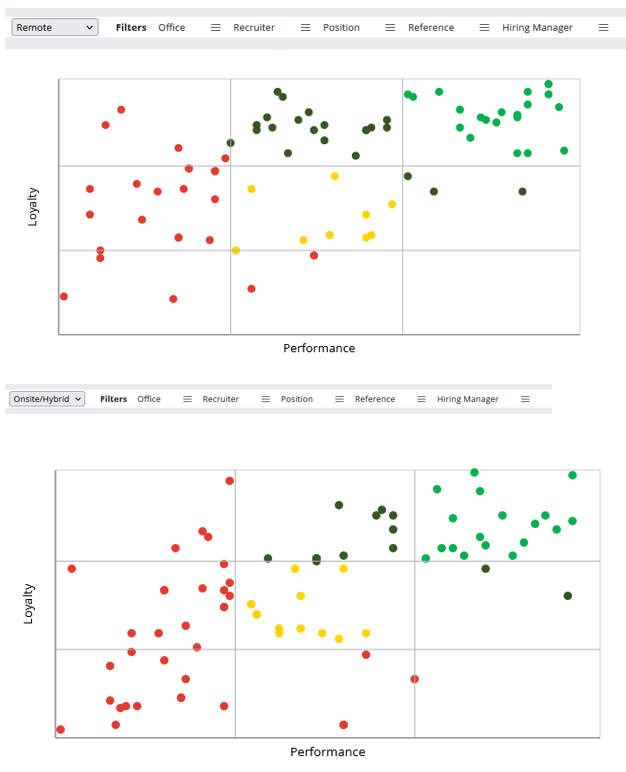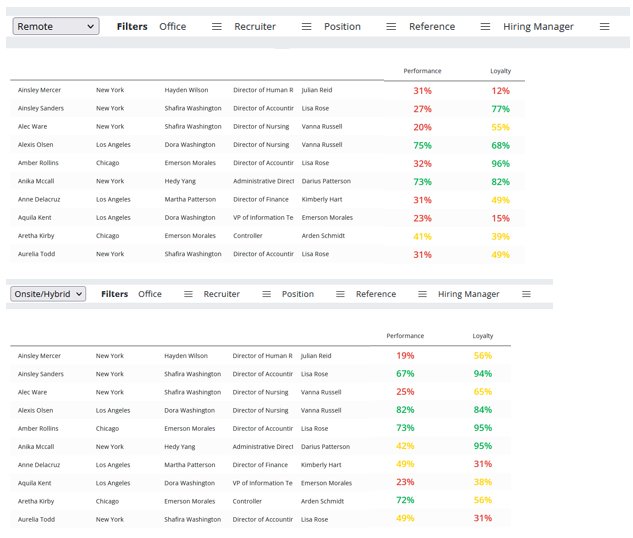Return-to-Office? Hybrid? Onsite? The Return-to-Office Impact Assessment Will Give You the Answers
Right now, many organizations are wrestling with the important decision of bringing their people back into the office full-time, staying remote or some sort of hybrid set up. Unfortunately, we are hearing from many CEOs that they ‘feel’ that a return to the office is good for culture, retention, performance, productivity etc. We are also hearing from CEOs that are in favor of remaining remote as well because they ‘feel’ that is the most effective approach. We are not advocating in one direction or the other—what we are advocating for is this: All CEOs and CHROs should use assessments, data and analysis to determine what route to take. This does not typically yield a one-size-fits-all approach. Any decision that you make will have big implications for the organization in terms of retention and performance (and the bottom-line)—using data and analytics will help you best understand those impacts. The primary goal is to avoid unforeseen consequences when making such a big decision.
At Hutrics, our Return-to-Office Impact Assessment (ROIA) tells you exactly what the impact of this decision will be and how to use the information to make a strategic decision to return-to-office, or not–we are the only assessment firm that has uncovered and validated the true differences in the profiles of those who will be successful in remote roles versus onsite/hybrid roles. We use our proprietary approach to help organizations make the right hiring (and workforce planning and development) decisions that distinguishes potential for performance and loyalty in onsite/hybrid vs remote roles. When making a decision to change your working situation at your organization, rather than base the decision on feelings, you need to assess your workforce to see if they are better suited—and will be more likely to perform and stay—for a particular work setup. When you know where each and every employee will find the most success, the decision to place them in remote versus onsite/hybrid roles not only becomes more straightforward—it will also become an evidence-based decision where you can show a clear return-on-investment. On the flip side, if you take the one-size-fits-all approach, then doing assessment/analysis upfront will help you understand the impact that this decision will have on performance and retention. For example, one assessment revealed a staggering 42% turnover risk if return-to-office was reinstated, with low performance in a nearly the same number of employees. This information, again, allows you to make a business decision, not a decision based on feelings.
For example, our Return-to-Office Impact Assessment runs the gamut from personality factors to situational judgment and even culture fit—and it tells you which of these factors are key drivers of success in remote versus hybrid roles. If you find that certain employees or high percentages of an entire department (e.g. accounting) are more likely to stay and perform well in an onsite/hybrid work situation—then you can make an evidence-based decision on changing the accounting department back to onsite/hybrid. You may find a different department (e.g. sales) is much more likely to find success in a remote situation, so you can make a data-driven decision based on that information. The visuals below show the loyalty and performance for employees in remote settings versus onsite/hybrid settings, this allows you to see the contrast and dig into each individual’s profiles. Each ROIA predicts both turnover and performance levels for each scenario (e.g., return-to-office, hybrid, employee choice, fully remote).

The ancillary benefits of using this approach are that the data collected from your current employees will also show you exactly where you have opportunities for coaching/development based on their results and will help you to find individual contributors who have strong leadership potential. By focusing on a data & evidence-based approach to making one decision (remote versus onsite/hybrid), you are really giving yourself the opportunity to engage in true workforce planning that will yield an actual ROI for the organization.

The ancillary benefits of using this approach are that the data collected from your current employees will also show you exactly where you have opportunities for coaching/development based on their results and will help you to find individual contributors who have strong leadership potential. By focusing on a data & evidence-based approach to making one decision (remote versus onsite/hybrid), you are really giving yourself the opportunity to engage in true workforce planning that will yield an actual ROI for the organization.

